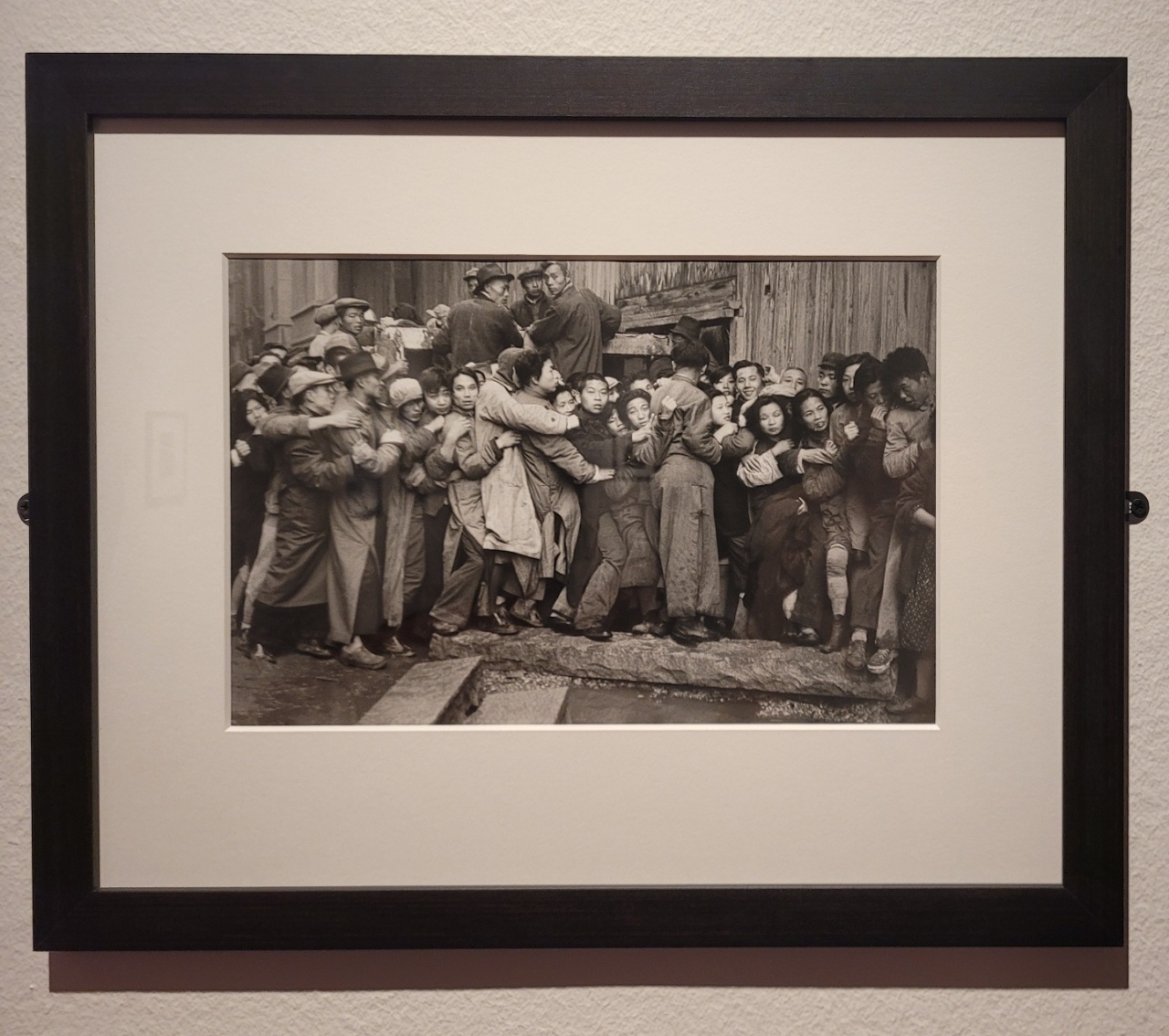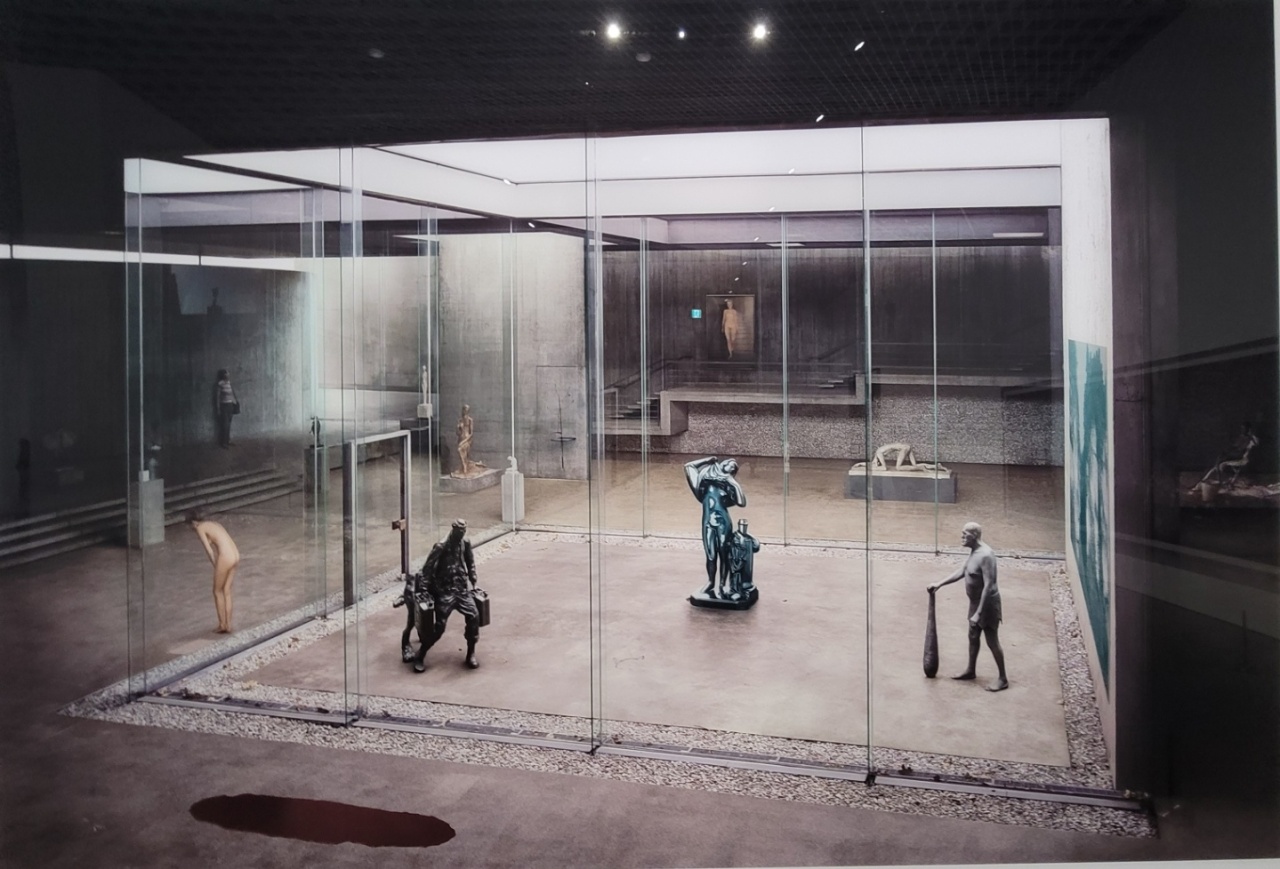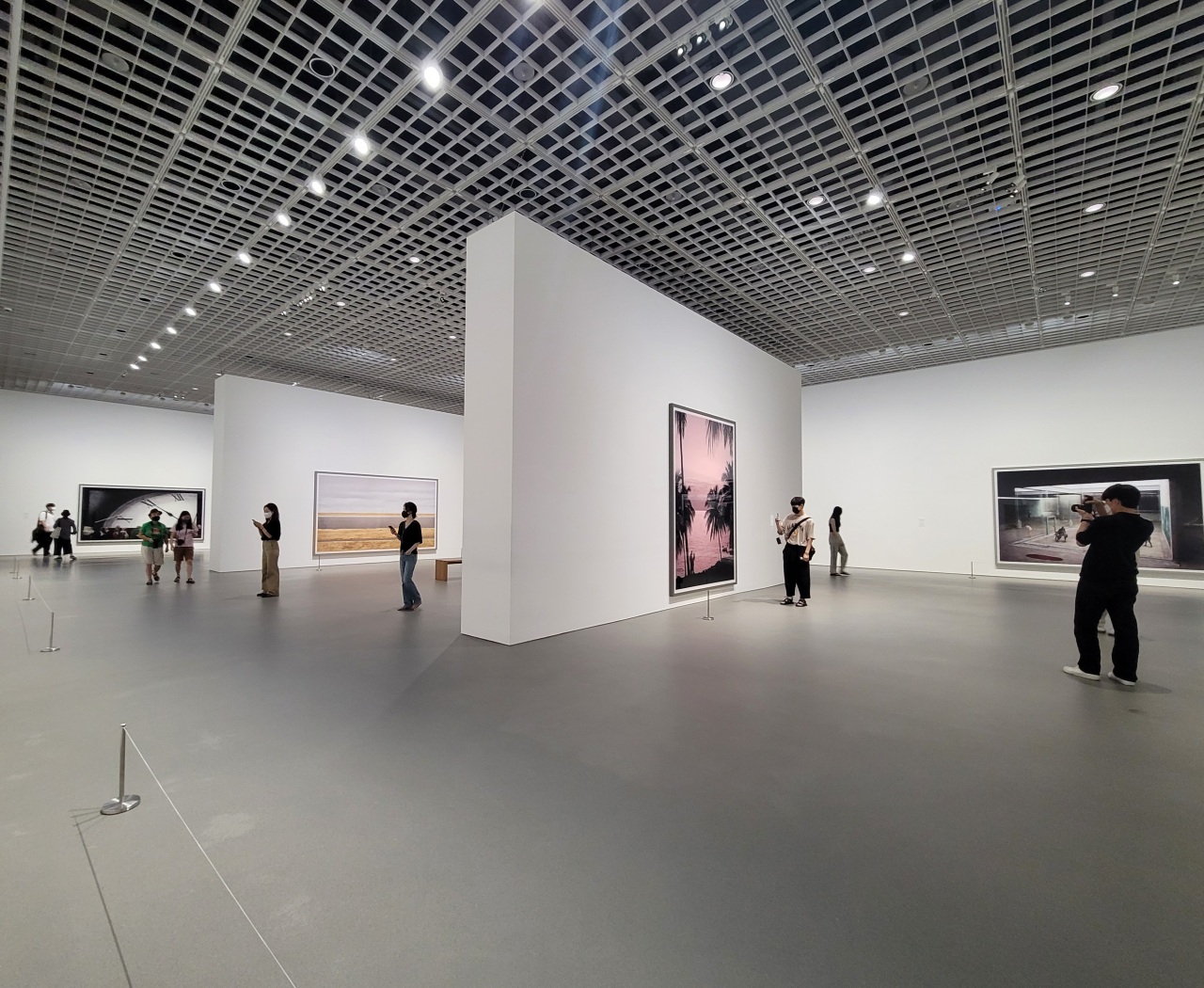
“Behind the Gare Saint-Lazare, Place de l’Europe, Paris, France, 1932” by Henri Cartier-Bresson (Henri Cartier-Bresson Foundation)
If you think photography is just a form of still image, photographs by two masters -- Henri Cartier-Bresson and Andreas Gursky -- may change your preconceptions, showing how it has evolved over time and can vary depending on the photographer and the format.
French photographer Henri Cartier-Bresson (1908-2004) pioneered street photography and elevated photojournalism to an art form. He applied geometry to black-and-white pictures, imbuing them with poetic rhythm. Rather than the things or facts that he captured, it is his point of view that draws that viewers’ attention. You may stand in front of his photographs for a few seconds or minutes to explore the composition of his images.
For more than 40 years, Cartier-Bresson wandered around the world as a photographer. From 1948 to 1950, he stayed in Asia, where he captured Gandhi and hectic moments in Shanghai as communism took over mainland China. Published in magazines and newspapers, his photographs were seen around the world.

“Last days of the Kuomintang, Shanghai, China, December 1948-January 1949” by Henri Cartier-Bresson is on display at “Henri Cartier-Bresson: The Decisive Moment.” (Park Yuna/The Korea Herald)
The Seoul Arts Center in southern Seoul is showcasing Cartier-Bresson’s work at the exhibition “Henri Cartier-Bresson: The Decisive Moment,” which will run through Oct. 2. The exhibition coincides with the 70th anniversary of the publication of “The Decisive Moment,” a book by the photographer considered to be one of the most important books of photography of the 20th century.
The exhibition includes photographs by Cartier-Bresson from the Henri Cartier-Bresson Foundation, established in 2003 by his wife Martine Franck, and their daughter Melani. The exhibition includes interviews, archives and documentary “The Decisive Moment…Photographs and Works by Henri Cartier-Bresson” directed by Carnell Capa.
Imagination can be added to photographs. The exhibition “Andreas Gursky” shows some 40 photographs that German photographer Andreas Gursky (1955-) took from the 1980s up to 2022. One of the key characteristics of his works is the use of technology to digitally construct images. He adopted the digital postproduction process in 1992, which entailed scanning and digitally editing photographs taken using film cameras.

“Lehmbruck I” by Andreas Gursky is on display at “Andreas Gursky” at the Amorepacific Museum of Art (Park Yuna/The Korea Herald)
One of his works, “Lehmbruck I,” shows a view of the sculptural courtyard of the Lehmbruck-Museum in Duisburg, Germany, with sculptures and paintings by Katharina Fritsch, Neo Rauch and Gerhard Richter are on display.
It is not until you read the description of the photograph attached next to the work that you realize the installation is a fictional exhibition that Gursky set up by adding works to the empty courtyard.
“Photography has long distanced itself from its role of depicting reality and has itself become a truly creative art: It creates the reality it depicts,” Gursky wrote on the work.

An installation view of “Andreas Gursky” at the Amorepacific Museum of Art (Park Yuna/The Korea Herald)
He employs methods of image construction such as conjoining and combining multiple images and emphasizing subjects through color adjustments to maximize the attributes of the subject. When you step out of the museum, you will ask yourself whether the images you saw were based on reality, or were what the artist has reconstructed.
The repeated architectural structures found in Gursky’s photographs of modern factories and stock exchanges also give a sense of sublimity.
The exhibition runs through Aug. 14 at the Amorepacific Museum of Art.
By Park Yuna (yunapark@heraldcorp.com)




![[Exclusive] Korean military set to ban iPhones over 'security' concerns](http://res.heraldm.com/phpwas/restmb_idxmake.php?idx=645&simg=/content/image/2024/04/23/20240423050599_0.jpg&u=20240423183955)




![[Herald Interview] 'Amid aging population, Korea to invite more young professionals from overseas'](http://res.heraldm.com/phpwas/restmb_idxmake.php?idx=645&simg=/content/image/2024/04/24/20240424050844_0.jpg&u=20240424200058)